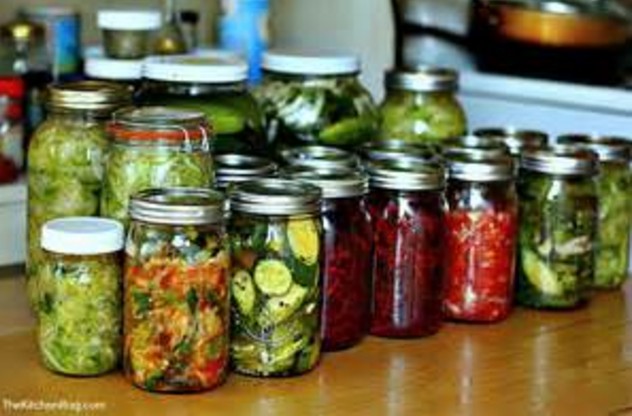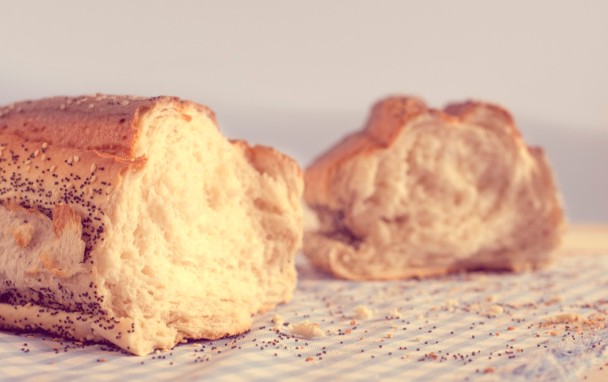Did you know that many of the foods we eat every day are the products of fermentation? This type of fermentation is not quite like your favorite microbrew, but it isn’t completely unlike it either. This list of everyday common foods and beverages that are fermented is pretty extensive, but here are a few that may surprise you, unless you are a part of the latest growing food and cooking culture called Wild Fermenters. The term, “wild fermentation” is credited to author and self-titled Fermentation Revivalist, Sandor Katz.
How do I know if my gut needs healing?
This is unfortunately an easy question to answer because so many people are suffering from an imbalance of the good and bad bacteria in the gut. Some of the symptoms of poor gut health are diarrhea, constipation, excessive passing of gas/flatulence, and even halitosis, more commonly known as bad breath. Lactic acid fermented foods are a way to bring back the balance of bacteria to your gut. There is a dangerous misunderstanding that all bacteria are bad. This is nowhere near the truth. We need certain good bacteria, such as bacteria called beneficial microflora, to be able to live with a happy and healthy stomach.
Here is an everyday food and beverage list that are products of a process called lactic acid fermentation:
Sauerkraut
Yogurt
Cheese
Breads
Pickles
Coffee
Teas
Tofu
Tempeh
And the list goes on…
According to fermentation expert Sandor Katz, just about everything we eat can be fermented, and to learn how to do so, will better your health by increasing and/or replacing the good bacteria in your gut that can be destroyed by such things, as antibiotics.
When we hear the words, “wild fermentation”, it sounds like a complex process, when it fact, fermenting fresh vegetables is one of the simplest ways to create truly delicious and healthy foods. Wild Fermentation begins with the ability to try something new that will develop into very familiar and comforting flavors. The supply list is short, the recipe is super easy, and a bit of imagination can actually be a huge help.
Supply List:
You can use your choice of Mason or Mason type jars/ old pickle jars in the fridge, a crock with or without a lid. Crocks can be covered with a clean kitchen cloth.
Your favorite fresh vegetables are great for beginners. At least you know that these will develop flavors you will enjoy. As you become more confident and experimental, you can wild ferment any vegetables, maybe even ones you hesitated to try before learning this process.
You will need Kosher or your favorite brand of sea salt.
You can also add your favorite fresh herbs and peppers to the mix, such as jalapenos or sweet bell peppers. This is where the imagination part comes into play.
Instructions:
Clean and sterilize your containers with very hot or boiling water. The most important thing you need to know for starters, is that you are making a simple brine, which is water and salt. You should also be aware that the “bad” bacteria, for example, candida, will not be able to grow and thrive in the wild fermentation environment. As long as you leave your vegetables under the salt brine for at least two weeks without constantly checking them and exposing them to the air, you will be fine. As a matter of fact, if you check your fermentation pots or jars and see a moldy substance on the top, as long the food is still submerged underneath the salt brine, you can just scrape the mold off, cover, and continue. There will be nothing whatsoever harmful about eating the vegetables.
After giving you the reassurance that it is almost impossible to mess up the fermentation process, let us backtrack a bit and explain how you ready the vegetables for the brine. Naturally watery vegetables, such as cabbage and lettuce, will create their own liquid portion of the brine by being massaged in a bowl until they begin to release their own water. Once the vegetables are softened and sitting in their own water, you should then begin to take a handful at a time and literally stuff the cabbage and/or lettuce or other leafy vegetable, into the jar or crock. Using your hands or a wooden spoon, continue pressing down the vegetables removing the chance of air circulating through your food product. Continue to add handfuls of the vegetables, their water, and approximately 1-2 tbsps of salt into your chosen container. There can be room left at the top, but the key is to make certain that your vegetables are completely submerged in the brine. Sit your container in a dark and cool area. Remember, that sun and heat will speed up the fermenting and that is not what we are looking for with this particular fermentation process.
*Note: For vegetables that are less watery, simply add filtered water to cover, along with your Kosher or sea salt, of course.
You can begin checking and tasting your ferments at approximately the two-week mark. There is no strong hard rule as to when fermentation is complete. It is up to your taste buds as to whether or not your fermenting is done and ready to eat. If your taste buds say “yes”, place your container in the refrigerator to stop the fermentation and enjoy.
Spice up your meals by adding your fermented vegetables to your stir-frys, salads, as a condiment on your burger, rice bowls, or as a vegetarian sandwich. The object is to make your meals tastier and more interesting while giving your gut one of the best forms of natural probiotic medicine that is easily and economically available to everyone.
By L Kimberly Smith
References: Dr David Williams, Eating Well, Boundless, Wild Fermentation
Photos by: mogreenjuice.com and Unsplash


